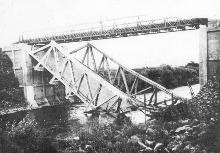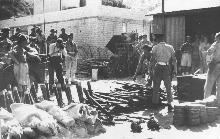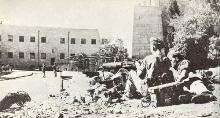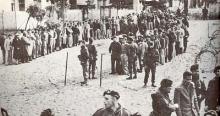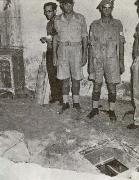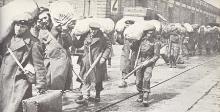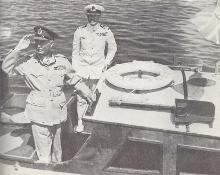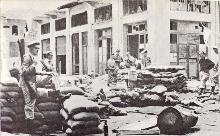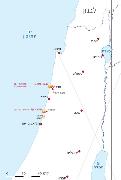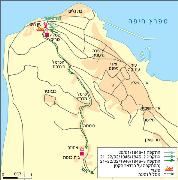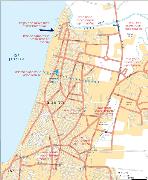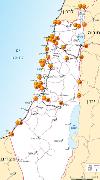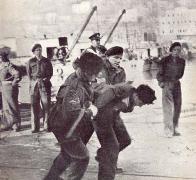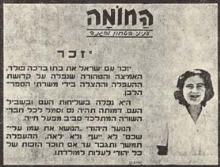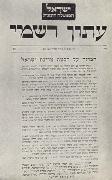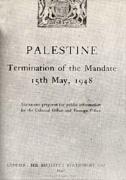| The struggle against the British Government in Palestine |
The Hagana's struggle against the British government began immediately after the publication of the White Paper in 1939, limiting Jewish immigration and settlements The Hagana protested by demonstrating, setting up blockades, and attacking government installations. Due to disappointment in British policy, and although it subsided during WW II, the struggle reignited afterwards. The British restricted Jewish settlement and refused to provide more immigration certificates for the many Holocaust survivors who stayed in refuge camps all over Europe and Cyprus. The struggle focused mainly on Illegal Immigration, protests and demonstrations against British policy and attacks on government institutions in Mandatory Palestine. In addition to regular Yishuv defense assignments, the Hagana continued with Illegal Immigration. Worldwide demonstrations and public opinion at the time, were very helpful in the struggle against British policy on immigration. Hagana founded also dozens of "illegal" settlements. Despite harsh punishment and intensive searches, the British failed to prevent weapons purchase, smuggling and covert manufacturing; Palmach and Hish continued attacks on British facilities. The Jewish Resistance Movement was established in October 1945, as a result of an agreement between the Hagana, Etzel and Lechi. Its command, which coordinated the operations against the British, and led by the Hagana, was suborned to the Yishuv and Zionist national institutions,. This collaboration lasted only 8 months, until July 1946. Since the British rejected the Anglo-American committee's recommendations, the struggle continued. The Hagana operations included, among others: Intensification of the illegal immigration (Haapala); Liberation of 208 illegal immigrants from the Atilt detention camp; The "Night of the Trains" - sabotage of railway tracks in 150 different sites; Demolition of British radar on Mount Carmel, of coastal police facilities in Hadera and Sidn'e Ali (Herzeliya), used to detect illegal immigration ships; Raiding mobile British police posts in Kefar Vitkin, Shefar'am and Sharona; During the "Night of the Bridges" operation, the Palmach blew up 11 railroad and road bridges along the borders, cutting off Palestine from neighboring countries, and thus demonstrated the power of the Jewish defense force; British vessels patrolling to intercept Hagana's "Illegal" immigration ships and used to deport them to Cyprus, were constantly sabotaged. | |||||||||||

